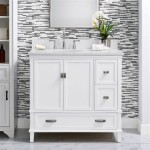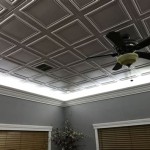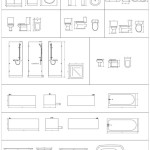How To Fix Mold On Bathroom Walls: Essential Aspects
Mold growth in bathrooms is a common issue caused by excess moisture and poor ventilation. It can affect the health of the occupants and damage the structure of the bathroom. Understanding the essential aspects of mold remediation is crucial for effective removal and prevention of its recurrence. This article highlights key aspects that need to be considered when addressing mold on bathroom walls.
Identification and Removal of Mold: The first step is to identify the type of mold present on the walls. Testing kits can be used to determine the specific mold species. Once identified, the mold must be removed carefully using appropriate cleaning solutions and techniques. Protective gear like gloves and masks should be used to prevent exposure to mold spores.
Addressing Moisture Sources: Mold thrives in moist environments. It is essential to identify and address the source of moisture that is causing the mold growth. Common sources include leaky pipes, poor ventilation, and condensation. Fixing leaks, improving ventilation, and using moisture-resistant materials in the bathroom can help prevent future mold growth.
Cleaning and Disinfection: Once the mold has been removed, the bathroom surfaces must be thoroughly cleaned and disinfected to prevent the remaining spores from spreading. Bleach solutions or commercial mold cleaners can be used for disinfection. All affected areas, including walls, floors, and fixtures, should be cleaned.
Ventilation and Air Circulation: Proper ventilation is crucial for preventing mold growth. Bathrooms should have exhaust fans or windows that allow for air circulation and moisture removal. Keeping the bathroom door open after showers or baths can also help improve ventilation.
Moisture-Resistant Materials: Using moisture-resistant materials in the bathroom can help reduce the risk of mold growth. Installing mold-resistant drywall or paint, using anti-mold caulk around fixtures, and choosing moisture-resistant flooring can prevent mold from penetrating and growing.
Regular Monitoring and Prevention: Regular monitoring of bathroom surfaces for signs of mold growth is essential. Prompt cleaning and remediation of any mold growth can prevent it from spreading and causing further damage. Maintaining proper ventilation, controlling moisture levels, and using moisture-resistant materials can help prevent future mold occurrences.
In conclusion, fixing mold on bathroom walls requires a comprehensive approach that addresses the underlying causes of moisture, removes the mold effectively, and prevents its recurrence. Understanding these essential aspects is crucial for successful mold remediation and maintaining a healthy and mold-free bathroom space.

How To Get Rid Of Mold In The Shower On Bathroom Walls Clorox

How To Remove Mold From Walls True Value

How To Get Rid Of Mold In Bathroom 2024 Tips From Puroclean

Bathroom Ceiling Mold Removal When To Clean Call Branch Environmental

Bathroom Mold How To Identify And Get Rid Of In Environix

A Handful Of Ways To Remove Mold On Bathroom Walls Clean Water Partners

How To Get Rid Of Black Mold In Bathrooms

How To Get Rid Of Mould And Mildew In Your Bathroom Rac Wa

How To Get Rid Of Mold On Bathroom Walls Family Handyman

How To Remove Mold From Bathroom Walls 6 Cleaning Tips
Related Posts







